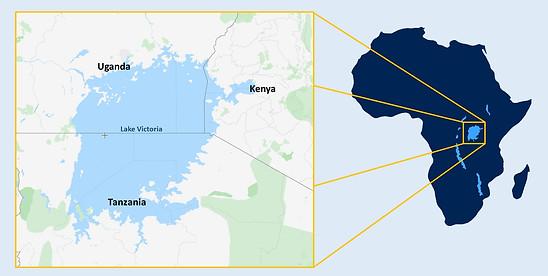Restoring Lake Victoria: CSE, Tanzanian authorities hold multi-nation stakeholder consultation (DownToEarth)

- 23 Jan 2024
Why is it in the News?
Lake Victoria, the largest freshwater lake in Africa and the world’s second-largest faces numerous environmental challenges that demand collective efforts for restoration and conservation.
About Lake Victoria:
Geography:
- Located in East Africa and bordered by Tanzania, Uganda, and Kenya.
- Africa's largest lake by area (approximately 59,947 km²) and the world's second-largest freshwater lake after Lake Superior.
- Lies in a shallow depression within the East African Rift Valley.
- The average depth of 40 meters, maximum depth of 80-81 meters.
Hydrology:
- The main source of water is rainfall, supplemented by rivers like the Kagera.
- The only outlet is the Victoria Nile, which flows into the White Nile and ultimately the Nile River.
- Plays a crucial role in the water supply and livelihoods of millions of people in East Africa.
Ecology:
- Supports a diverse ecosystem with over 200 fish species, including the Nile perch and Nile tilapia.
- Important habitat for birds, reptiles, and amphibians.
- Facing challenges like pollution, overfishing, and invasive species.
History and Culture:
- Named after Queen Victoria by British explorer John Hanning Speke in 1858.
- Has been a vital source of transportation, trade, and food for centuries.
- Plays a significant role in the cultural traditions and folklore of the surrounding communities.
